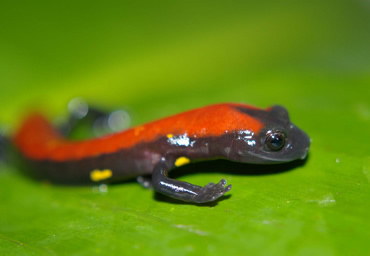Carbon market may fund dam in Panama that threatens natural reserve
Carbon market may fund dam in Panama that threatens natural reserve
Jeremy Hance, mongabay.com
September 1, 2008
|
|
The UN’s Clean Development Mechanism (CDM) — a scheme that provides funds to projects that reduce emissions in developing nations — may be used to finance a hydroelectric dam in Panama which, according to environmentalists, threatens a biologically rich World Heritage site and an indigenous tribe, the Ngobe.
AES Corporation, a Virginia-based company, is overseeing the dam’s construction in the Palo Seco Protected Forest on the Rio Changuinola. The river flows out from La Amistad International Peace Park and Biosphere Reserve (UNESCO World Heritage sight), a park that is shared by Panama and Costa Rica.
The American firm has requested carbon credit certification under the CDM for the project, claiming that the dam will help against global warming. However, recent research suggests that tropical dams release methane, a gas which has more than 20 times the global warming potential of carbon dioxide.
Beyond potential emissions from flooding, environmentalists say the dam threatens La Amistad Reserve, Central America’s largest intact rainforest. Biologists have counted more than 215 mammal species, 600 birds, 115 fish, 250 reptiles and amphibians to date in the reserve, including 180 plant species and 40 bird species found no-where else in the world. La Amistad’s biological stars include the quetzal, harpy eagle, howler monkey, jaguarondi, tiger-cat, tapir, and jaguar. In January scientists from the Natural History Museum of London announced three new species of salamander from the Costa Rican side of the park, proving that there was still much left undiscovered in La Amistad Reserve.
 Brightly colored, this new salamander species is one of 3 discovered in La Amistad National Park in Costa Rica. © A Monro |
According to conservationists, the dam will most directly damage the lives of the river’s fish, shrimp, and other freshwater creatures. Migratory fish may face extermination in the region.
“Many of the fish and all shrimp species living in these rivers must migrate between the ocean and freshwater to complete their life cycles; the dams would block their migration and effectively extirpate up to 11 aquatic species from the Biosphere Reserve,” wrote the Center for Biological Diversity in a statement last year. “Such a loss would likely have devastating and cascading consequences for indigenous culture and livelihoods and for biodiversity throughout the area.”
The dam will do more than degrade the region’s environment: a thousand Amerindians of the Ngobe tribe will be forced to relocate from the area. Protests from the Ngode have allegedly been met with blackmail, bribery, and repression from Allied Energy Systems (AES) overseeing the project.
Two local NGOS, the Alliance for Conservation and Development along with Cultural Survival, have filed a petition to the Inter-American Human Rights Commission to protect the rights of the Ngobe people.
Construction of the dam “is further evidence that the CDM [UN Clean Development Mechanism] is being treated as a subsidy stream for environmentally destructive projects,” says Oscar Reyes from Carbon Trade Watch. “It risks a lose-lose scenario, where the people and environment of Panama are threatened by a project that would allow industries elsewhere to continue polluting.”
Along with AES construction of the Panamanian dam is being also undertaken by Empresas Publicas de Medellin out of Colombia, and a local company, Hidroecologica del Teribe.
A year ago fifty environmental groups sent a letter to AES demanding that it withdraw from the project. Despite such pressure, plans are moving ahead.